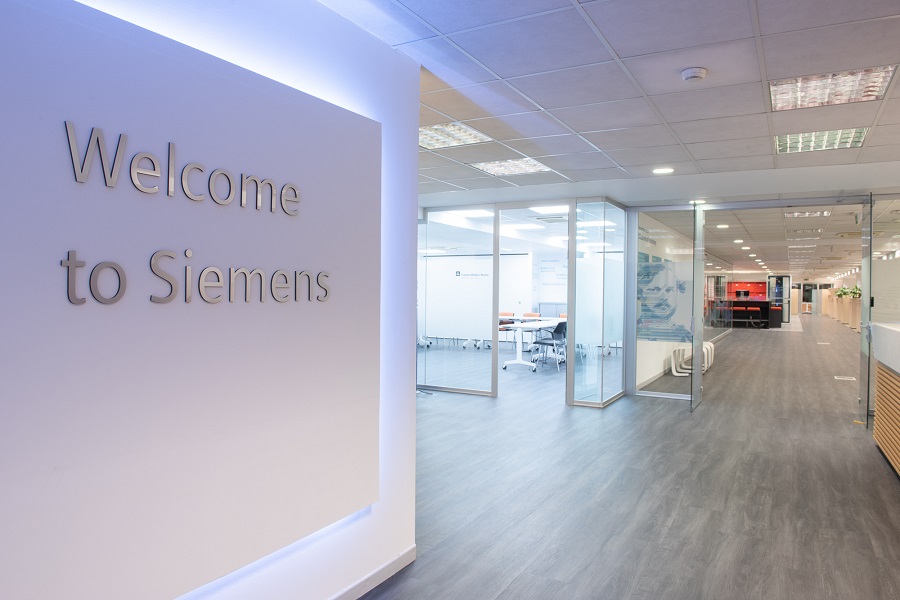Siemens Smart Infrastructure in the U.S. unveiled a new sustainable, EV charging concept structure designed for electrifying fleets and high demand charging applications at scale.
The new VersiCharge XL concept (UL standard) was created to electrify new or existing parking lots and building structures quickly and efficiently by using a modular, scalable design made in partnership with Nexii Building Solutions using their proprietary, sustainable building material with low carbon footprint in the U.S. The solution, which resembles a modern-day fueling station, was developed in late 2021, and then installed in only three days at Siemens’ research and development hub for Electrical Products and eMobility solutions in Peachtree Corners, Georgia, USA.
This innovative product was rapidly developed and co-patented with Nexii, a green construction technology company, and is the industry’s first electric vehicle (EV) charging system to house all necessary electrical infrastructure components that power EV chargers in an above-ground, enclosed, and low carbon structure. The above ground design requires minimal disruption to existing parking lots by eliminating costly, time-consuming, and substantial civics works and reduces on-site construction waste and environmental impact.
“The massive growth of electric mobility requires an easy and rapid expansion of a reliable and sustainable charging infrastructure. This specific concept shows how Siemens and its partners are working on new, innovative ideas to help support this growth in the U.S. market. Working closely with partners globally to meet local needs is very important to us and this cooperation embodies that spirit,” said Markus Mildner, CEO of eMobility at Siemens Smart Infrastructure.
The VersiCharge XL concept (UL standard) leverages proven power distribution technologies used indoors at locations like data centers and industrial facilities and elevates them above-ground in a weather-resistant, outdoor enclosure. With its scaling and versatile capabilities, this concept is designed to be installed to charge large numbers of electric vehicles using either level 2 or level 3 EV chargers in outdoor environments ranging from small office building parking lots to last mile logistic hubs, and up to a stadium parking lot.
“Construction and transportation are two of the biggest sources of carbon emissions driving climate change today,” says Stephen Sidwell, co-founder and CEO of Nexii. “Bringing together Siemens and Nexii demonstrates the power of rapid ideation and development of solutions to some of the world’s biggest problems. We’re excited to unveil this initial eV Charger prototype and look forward to even more innovations we can make working together.”
The prototype was created using Nexii’s building material Nexiite, which has comparable properties to concrete with significantly less embodied carbon, as the vertical structure to support Siemens Sentron Busway systems that connect to power the EV chargers.
(Siemens)



















































